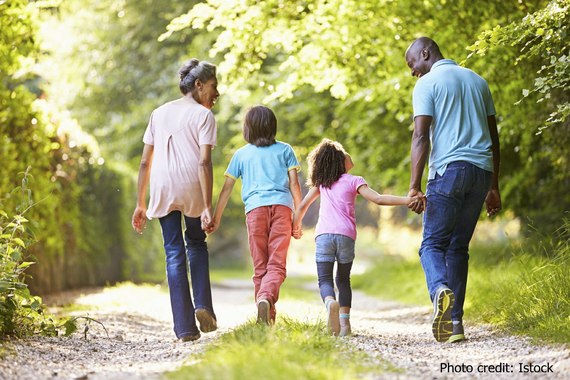No matter how many candles were on your last birthday cake, to get the most out of your life and be on track for feeling fine at 99, here are seven essential moves you need.
#1 Wiggle - Just stop with the sitting still as a rock. Schools should stop it and so should we. We are bodies in constant motion. A little bit of movement, even while sitting, goes a long way in keeping circulation going. Recent research makes a good case for toe tapping as a way to prevent cardiovascular disease.
#2 Turn - If you are one who cannot easily look over your shoulder to back out of a drive or talk to the person next to you on the subway, you know this is a problem. To regain your ability to turn, consider returning to the developmental motion of rolling around on the floor (or bed). You may feel silly doing it. Or too creaky. Or you may get a little motion sick when rolling. Start small and gradually do more.
While sitting or standing, Cathy Paine, Feldenkrais practitioner offers this tip, "Begin to experiment with different ways of turning. For example, bring one arm out in front of you at shoulder height. Use your arm to lead yourself to one side, say to the right while looking at your right hand." Learning to use more than just your neck can turn this turning challenge around.
#3 Reach - Laying on the belly and reaching for a "toy" is the next thing to master. "Mastering reaching means you know how to balance yourself against the floor while extending an arm. Your abdominals and extensor muscles come into play. Your shoulder blades and thoracic spine become mobile," offers Physical Therapist Stacy Barrows and creator of the SmartRoller®. "There are creative ways to play with reaching in sitting and standing such as watching your fingers as you reach. Sliding your hand up a wall at different angles. Or pushing off with one foot as you reach for an elusive light cord."
#4 Crawl - A movement that is highly organizing for the entire body is crawling. MovNat coaches are huge advocates of crawling as exercise. "If you want to improve your shoulders, your gait, and your entire body, then adding crawling variations is ideal," says Steve Gangemi, Chiropractor and MovNat trainer in his article "How to Crawl Your Way Back to Shoulder Health".
#5 Squat - Part of our developmental and evolutionary heritage is the ability to squat. Most all toddlers are at home with their behinds hanging towards the ground in a deep knee bend. You will find a fair amount of controversy around squat form. Must the knees stay behind the toes; should the feet be turned out; or is a full squat on flat feet a goal? But what you won't find much controversy on is the importance of being able to do a squat to some degree (at least to sit) comfortably. According to Alfons Graber, author of My Feldenkrais Book "Squats make every other function better." Indeed, not only does squatting place the colon in the right place for bowel movements, it builds good glute and quad strength.
If you have lost the capacity to squat and are looking to get it back in your wheelhouse, Sandra Bradshaw, author of Wake Up Your Body and Brain, offers some beginner steps such as: "Try to squat and feel how far you go down easily. Then sit in a chair and work with these two things: 1) Bend forward from the hip joints. Many people really don't know how to access their hip joints in the squat. 2) Keep your spine long including the back of your neck. After you have done that a few times. Stand and try to squat again. Notice if is more comfortable or if you go a little further."
#6 Up/Down from the floor - The ability to get up from the floor without any assist from a hand or knee has been tied to longer living. You have probably seen people pop up and down from the floor as if they haven't a care in the world while others are heaving and pushing. Different environments require different ways of getting up and down. "Practice with assists, such as a chair to lean on. Once you are good at that, challenge yourself to find another way. Children don't learn to get up in one day, and you don't have to, either," encourages Feldenkrais teacher, MaryBeth Smith.
#7 Walk - Nothing new here. But what I can add to the conversation is that quality walking is quality medicine. Yes, virtually any walking is better than none, but don't settle there. Learn about YOUR gait and improve it. Ruthy Alon, creator of Movement Intelligence offers ways to use trekking poles for building better balance, posture and upper back health.
Would you like some help with these seven moves? I've put together a playlist of videos from a few experts to get you started. You can start with the first one and keep going until you are wiggling, turning, reaching, crawling, squatting, standing and walking with ease.
Cynthia Allen can be found at futurelifenow.com